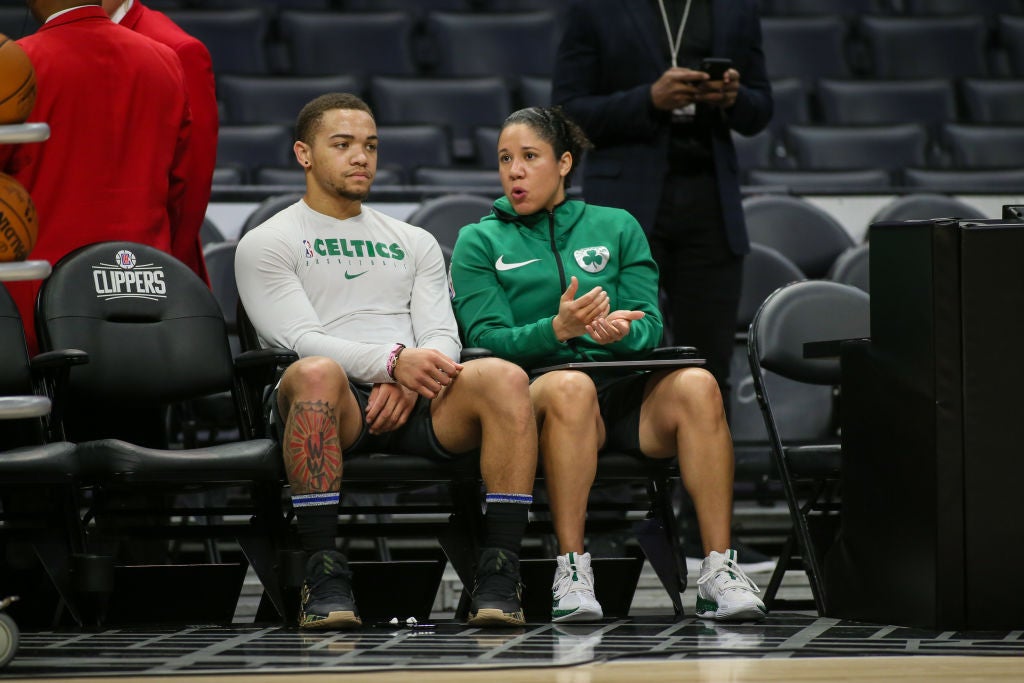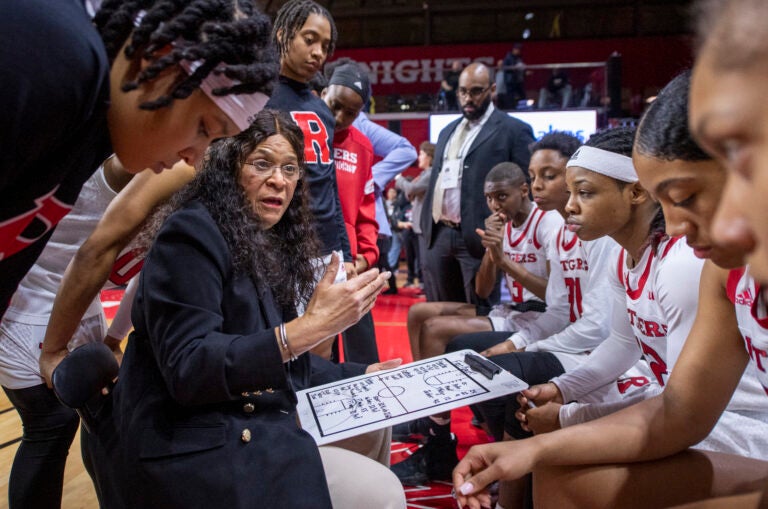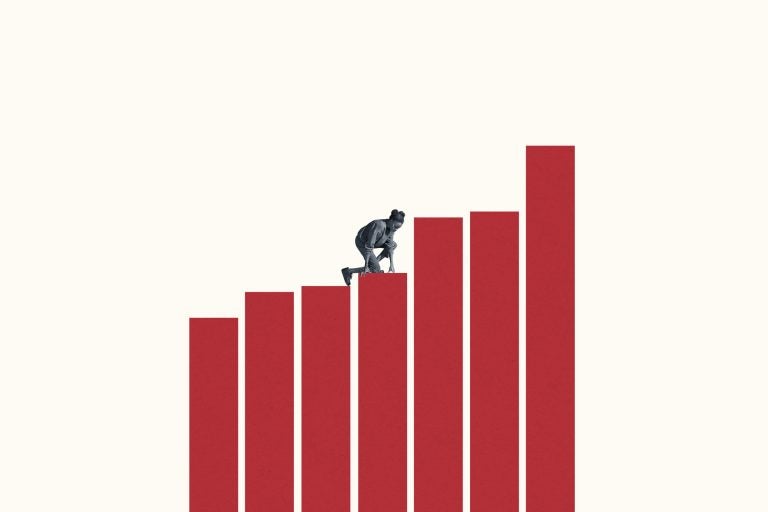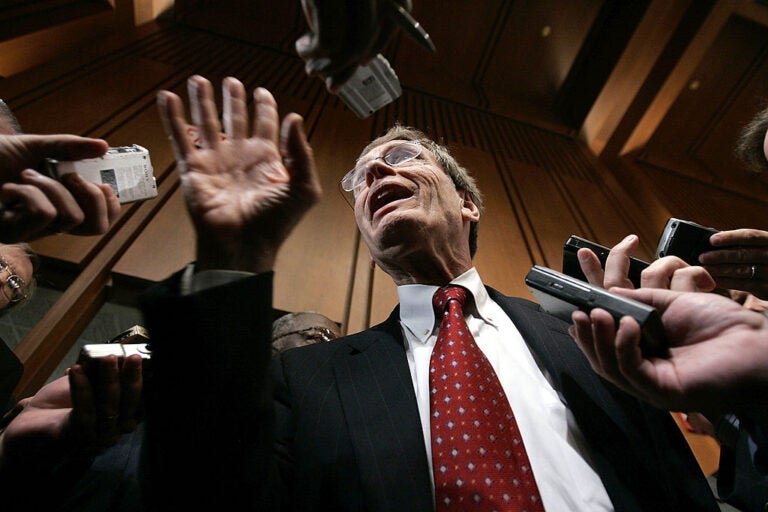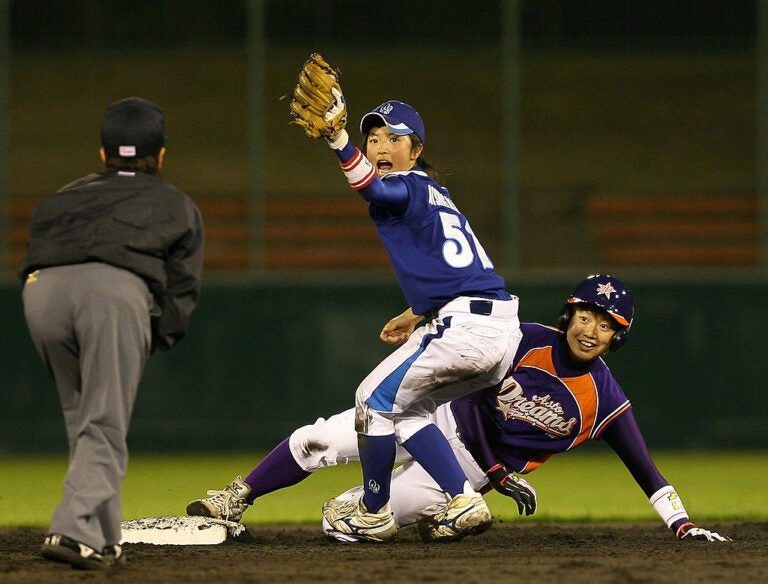The 'Long Slog' of Women Coaches Trying to Break Into Men's Basketball
Why this matters
Women often lose out on chances to coach women, according to new Global Sport Institute data, but what about women coaching men? With leaders like Kara Lawson paving the way, is basketball any closer to equity in terms of women coaching across gender lines like men so often do?
For anyone looking at social change and progress made by women, the women who are coaching men in basketball provide something of a Rorschach test.
In recent years, we’ve seen a previously off-limits set of occupations – assistant coaches in men’s college basketball and the National Basketball Association, and head coaches of men’s teams from high school to the NBA Summer League – breached by a cohort of qualified women who, quite frankly, should have been getting these jobs for decades.
It is the time of Becky Hammon, top assistant to Gregg Popovich with the San Antonio Spurs. It’s the time of Edniesha Curry, formerly an assistant coach for the University of Maine men’s team and now with the Portland Trail Blazers. It’s the time of Kara Lawson, moving from the broadcast booth to Boston Celtics assistant before taking a head coaching job with Duke University’s women’s team. And it’s the time of former Seattle Storm head coach Jenny Boucek, who became an assistant with the Dallas Mavericks before joining the Indiana Pacers.
Only none of this is overly impressive to Lawson, whose career in coaching was delayed by sexism. Back in her playing days with the Sacramento Monarchs of the WNBA, she asked the NBA’s Sacramento Kings, who operated in the same building under the same ownership group, if she could simply attend practice to learn. She was turned down three times – and when the team finally let her watch, she was put behind a one-way mirror so that she wouldn’t be a distraction.
As recently as a few years ago, Lawson was convinced this late start would keep her from a coaching career, an absurd outcome for someone with the mind of a championship-winning point guard and the kind of resume that leads men into coaching teams of either gender as a matter of course.
So forgive Lawson if her view of the progress being made by women basketball coaches is restrained. She has her eye on the numbers.
“I think it’s changing,” Lawson said, emphasizing the last syllable. “I don’t think it’s changed. … Doors have been closed for far too long. And they’re starting to open. But I wouldn't say it's changed, or that the perspective has changed, or that the landscape is changed, or the minds of people have changed. I think there's still people holding very strongly to the thought that women can't coach men.”
When Curry left Maine to coach in Portland, the number of women coaching men in Division I basketball dropped from one to zero. Meanwhile, Kristi Toliver has drawn rave reviews for her coaching work with the Washington Wizards and now the Mavericks. In fact, changes were made to the most recent WNBA CBA in anticipation of many other players following her lead during the league’s offseason. But few have.
Related: Women Coaches Face Greater Professional and Personal Obstacles Than Men
There are some basic, data-centric reasons this happens. A new study from Arizona State University’s Global Sport Institute shows that 88.3 percent of those hired as head coaches of NCAA Division I women’s basketball programs from 1980 to 2020 held the following positions just before taking their new jobs: NCAA head coach, associate head coach, or assistant head coach.
A talent pipeline cannot exist if people aren’t given the chance to flow through it.
Take Katie Smith. Back in 2015, I caught up with her when she was an assistant with the New York Liberty, mentored by Bill Laimbeer. She was sitting by the Liberty bench before a game in which Hammon would be inducted into the team’s Ring of Honor. This is what she told me then:
"I think for all of us in basketball, it's like, 'Men's, women's, it's all the same,'" Smith told me. "But seeing [Hammond] getting work in an organization like the Spurs? Move her right on over? It opens up your mind a little bit. Like, I didn't think that was a possibility."
For Smith, though, it’s been a path through women’s basketball alone – she succeeded Laimbeer as the Liberty’s head coach, a monkey’s paw of a hiring if ever there was one, as team governor James Dolan left the franchise by the side of the road — announcing he would sell before finding a buyer, and relegating them from Madison Square Garden to the tiny, suburban Westchester County Center in White Plains. Smith is now an assistant to Cheryl Reeve in Minnesota, but has yet to get the kind of second chance to coach that is so common for men.
But even that’s a simple matter of math, when there are only 12 WNBA head coaching gigs, compared to 30 in the NBA.
There are people eager to change the equations, though, as women also make their way into both college athletic director positions and, critically, front office spots in men’s basketball. Take Amber Nichols, general manager of the Capital City Go-Go, the G League franchise of the Washington Wizards. She’s been in basketball management for a short time – with the Go-Go since last season, and GM since January 2021 – yet recognizes what, for her, feels like a sea change of women in upper management, citing people like WNBA great and current New Orleans Pelicans executive Swin Cash as models for her own career path.
“Now, there's considerably more women in men’s basketball – leadership positions and basketball operations positions – than when I first started,” Nichols said. “I definitely think not only does it get easier, I think it gets a little bit more intentional. With just the progress of not just myself but other women in general, I think the conversations get intentional. And it's like, this organization has seen success with their diversity. I tried to replicate that here. And I think teams are now actively looking for women to fill those positions.”
“Intentional” is a tremendously important word here, one that helps to explain not only why the numbers are so low but also how successes happen. In the case of Nichols, she played college basketball and set her sights on getting into the front office world of men’s hoops yet couldn’t get anywhere near an interview. She had to create her own way, becoming a basketball blogger, self-publishing while selling tickets with the Kings. That drew the attention of Hall of Famer Nancy Lieberman, who ultimately helped connect her to an internship with the Wizards. Even then, Nichols needed a second job just to make ends meet.
Hammon took an equally idiosyncratic and serendipitous path, talking her way into Spurs practices by being in-market and rehabbing an ACL tear during a WNBA offseason, then winning Popovich’s trust over time.
These are sui generis strategies. They are not ways for men’s basketball to tap into the incredibly underutilized talent pool of women in basketball. One of the first steps toward the latter, Nichols said, is making it clear to women that men’s basketball is a welcoming place for them.
“I would say the difficulty or the challenge is finding a way to just replenish that pipeline,” Nichols said. “Like, I think I think it's easier for men to have that pipeline replenished. Because you have a large number of students coming out every year, young men that are just interested in basketball, I think it's been a little bit harder to find women that are interested in men's basketball specifically. And I think that we just kind of got to do a better job of identifying those candidates.”
This is not to say there aren’t women who would jump at the chance, as Smith pointed out, to coach men, too. It’s that the infrastructure necessary to make that move seem realistic is missing.
“What can I do to get in front of decision-makers on the men's basketball side that can help me foster an opportunity like this, instead of just saying it's possible?” Nichols said. “Because I think that that's what I think that's also a piece that kind of deters women from trying – is just the process and not knowing what it entails.”
For Nichols, the answer has to be a formal mentoring and hiring component at the G League and NBA levels, something she said she’s continuing to push for.
Related: American Sports Perpetuate ‘A Certain Type Of Manhood’ - Here’s Why It Persists
In the meantime, though, there is no shortage of women who see coaching men’s basketball as a perfectly acceptable outcome for a career, just not for them. Cheryl Reeve of the Minnesota Lynx is an example. She has won four WNBA titles as a head coach with the Lynx and by all rights should be on the shortlist for every single job in the coaching world that comes up, men or women. The same goes for Dawn Staley, a national title winner with the University of South Carolina and the gold medal-winning coach for USA Basketball’s women’s team this summer at the Tokyo Olympics.
Earlier this year, Staley was interviewed for Portland’s head coaching job, which eventually went to Chauncey Billups. “When you’re being sought out, you have to vet it a little bit to see if they’re really serious about it,” Staley said on Just Women Sports’ Tea with A and Phee podcast. “I thought they treated me like a real candidate. Whether or not they seriously considered me, I felt like it wasn’t a fluke. So I agreed to do it.”
Staley also interviewed with Portland to make it easier for the next woman who does so. A few months later, she signed a $22.4 million extension to keep her at South Carolina through at least the 2027-28 season – highlighting how increased opportunities to coach men can also benefit women coaches by helping to raise their level of pay.
“There's no question that the way that we're valued across all sports and to be a candidate for more positions than just in the women's game, it increases your overall market value,” Reeve said in an interview last month about Staley’s extension. “I think South Carolina, in general, has valued the heck out of Dawn. There are some ADs that would have told Dawn, ‘This is as much as we're gonna pay you. So go ahead and take whatever opportunities to pay you more.’ I give South Carolina so much credit to recognize exactly what they have in Dawn Staley and stepping up resource-wise. [Because] this is what we do for men in men’s sports.”
So, where does that leave the sport? About where Kara Lawson laid down the marker at the start of this piece. There’s little doubt the successes of women who have cracked the various glass ceilings in men’s basketball are making it easier for the next woman to follow. Yet those women also remain anomalies in a profession that hasn’t set about fixing this at anything like a systemic level.
And how will we know when that changes? Lawson herself has a metric.
“It’s gonna be long, I think,” Lawson said of when we can expect this change. “I think there’s one coach in the NBA in front of the bench [where top assistants sit], right? Becky. So I’d say that’s a long slog ahead. … So, there’s three in the front, times 30, that’s 90; 89 of 90 are men. So we’ve got a long way to go.”
Monthly Issue
Taking Charge in Women's Basketball
Across the world, basketball is relatively unique among team sports with the volume of women who play and coach in its ranks. Still, trends in the sport’s leadership don’t accurately reflect the athletes who put in the work each day on the court.
While a diverse crop of head coaches at HBCUs has not created a pipeline to the Power Five, new momentum behind women’s sports has helped carry women’s basketball to new heights. Can an exciting, outspoken generation of leaders in the sport turn it into a more equitable and popular avenue for women to thrive as leaders and athletes?

